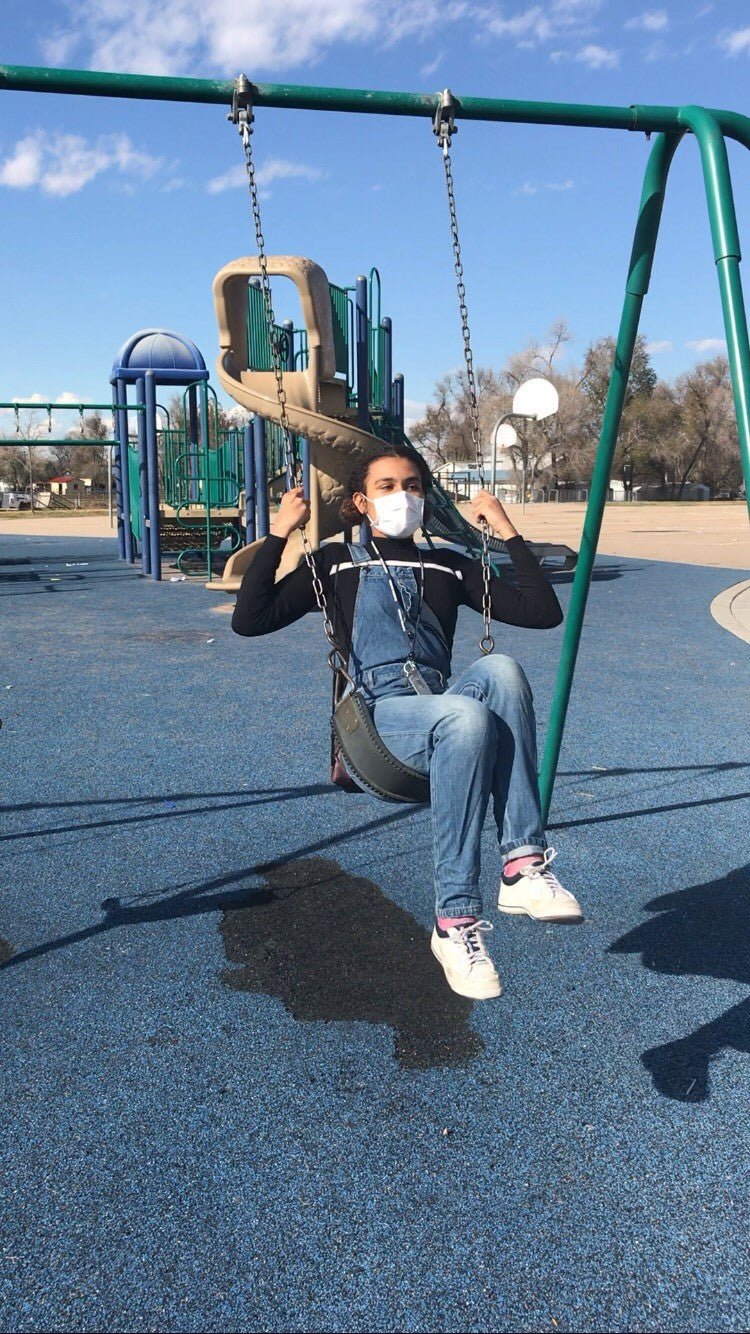by Emmy Scott
On November 11, 2017, my organization, the University of Northern Colorado’s Earth Guardians chapter, helped form a tour of the fracking sites in Weld County, Colorado. This event was sparked by a new well project that was first proposed to be in a less industrial part of Greeley, Colorado and near another school. But, after concerned community members fought for the rejection of the proposal, the county commissioners got acceptance to place it near Bella Romero Elementary School. If you are familiar with Greeley, Colorado, then it’s very clear this is an environmental injustice issue and that is why the tour focused on informing the community while helping them voice their opinions against the Bella Romero well proposal. This event was held by a local environmental organization geared towards addressing climate change, 350 Northern Colorado, whose name is inspired by the official considered safe limit of carbon dioxide in our air in parts per million: 350.

We met at a neighborhood church near the university where people from all over Colorado – Denver, Fort Collins, Boulder and more - loaded into buses to begin the journey towards learning more about fracking. The first site we stopped at was Extraction Oil and Gas. 350 NOCO began the tour by introducing themselves and informing the crowd that currently our atmosphere is above 400ppm of carbon dioxide. Then right after, a brave petroleum engineer gave a very informative speech about the process of mining oil and gas and fracking. He informed us that they start by drilling huge wells typically 17,000ft down. Then they set surface casing to seal off all the aquifers in order to protect our viable water from the chemicals used during the extraction process. After that the fracking begins and around 20 trucks, depending on the size of the site, inject 5,000-6,000 psi of water into the wells. The trucks' pumps can extend 250- 500ft into a reservoir in order to drain the proper amount of water for that site. The petroleum engineer stated several million gallons of water are used for a single fracking job – around 2-8 million gallons. The diesel engine trucks also pump nearly 24/7 for several days leaving the engines constantly running during that time, releasing an abundance of CO2 into the air. After the job is done, companies are supposed to remediate the land by putting a cap on the wells and restoring the ecosystem back to its most original form. The gallons of (now toxic) water used during the process is either injected into deep aquifers, that currently aren't used as a drinking source - but as water becomes more and more scarce that may change - or recycled for another fracking job. A plant ecologist spoke after the petroleum engineer and claimed currently there is no evidence of the sealed wells causing harm to the environment, but the land is never 100% restored. Additionally, as the caps on the wells holding age, there’s a potential risk of exposure.
We finished the tour at Bella Romero and another school in Greeley. At the high school, Greeley West High School, less than 20 feet from their varsity football field and in the middle of a nice neighborhood was the gate to an oil site. A couple of months before on September 7, 2017 at a football game, residents heard strange noises and called 9-1-1. Later, officials uncovered that the oil site had been leaking gas for a decent amount of time, releasing a toxic cocktail of chemicals from the wells into the air that the community and high schoolers interact with. This event was especially alarming because the elementary school site is proposed to have twice as many wells and will be built less than 1,000 feet from the children’s playground. In addition, there have been other cases of fracking sites malfunctioning, like the explosion in San Juan County, New Mexico. Not only that, but much like this other well site, the project will be built in the middle of a neighborhood, putting the whole community at risk.

After the tour we regrouped at the church and wrote postcards to the representatives of Weld County and the Weld County Commissioners. Overall, it was fantastic experience that taught me so much and got the community more involved in issues right in our own backyards. If you too feel passionate about stopping the building of wells too close to Bella Romero you can find out more information on http://350colorado.org/350-fort-collins-team-delivers-fracking-comments-to-state-task-force/ or address your concerns to the Colorado Governor John Hickenlooper. If you are dealing with the same issue in your own backyard then I encourage you to speak out, get involved with actions from local environment groups and never ever be discouraged or afraid to voice your opinion. Clean air, water and resources is a mission bigger than a single person, it’s going to take a community, but it all starts with that single person speaking out.


